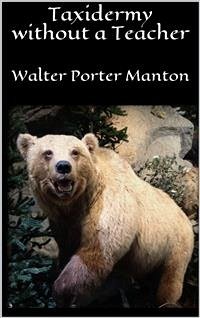Well, here we are at last. Please turn the key in that door—to keep all inquisitive priers out—for the process into which I am about to initiate you is something of a secret, shrouded by the thin veil of mystery.You have come to me today to learn something of the art of Taxidermy, so we will take up, for your first lesson, bird skinning and mounting. But first let us see what tools we shall need to accomplish our end: a pair of good sharp scissors—surgical scissors, with long handles and short, stout blades are the best; a knife or scalpel; a pair of spring forceps; a common knitting-needle; a rabbit's foot, which should be cut off at the knee, the nails cut out, and thoroughly cleansed and dried,—used for smoothing and dusting the feathers of birds after mounting; a fishing-hook, with stout cord attached, for suspending the bodies of birds that would otherwise be too large to handle conveniently.
Bitte wählen Sie Ihr Anliegen aus.
Rechnungen
Retourenschein anfordern
Bestellstatus
Storno









